Diverse Different

In what ways can cultural diversity be embraced to foster social harmony ?
Cultural diversity is a rich tapestry that weaves together various beliefs, practices, and traditions of different groups within a society. Embracing cultural diversity is not just about celebrating differences; it's about creating an environment where everyone feels valued, respected, and included. Here are some ways to foster social harmony through the embrace of cultural diversity: Education and Awareness: Integrate diverse perspectives into the curriculum, teach history from multiple viewpoints, include literature and art from different cultures, encourage student and teacher exchanges, organize international conferences and workshops, partner with schools abroad for virtual interactions. Community Involvement: Host multicultural festivals showcasing different traditions, celebrate national holidays from various countries, organize cultural fairs with food, music, and dance, collaborate on projects that benefit all communities, volunteer in diverse neighborhoods, support local businesses owned by immigrants. Media Representation: Ensure media portrays a wide range of cultural backgrounds, avoid stereotyping and promote accurate representations, include diverse voices in news reporting and commentary, create platforms for underrepresented groups to share their stories, translate important information into multiple languages, use technology to bridge language barriers. Workplace Inclusivity: Implement policies that value cultural differences, provide training on cultural sensitivity and awareness, foster an inclusive environment through open communication, encourage the formation of ERGs for different cultural backgrounds, support these groups with resources and recognition, use ERGs as a platform for knowledge sharing and networking. Legal and Policy Frameworks: Strengthen laws against discrimination based on race, ethnicity or culture, enforce these laws fairly and consistently, educate the public on their rights and protections, implement programs to level the playing field for marginalized groups, address historical inequalities through targeted initiatives, monitor progress and adjust strategies as needed. Interfaith Dialogue: Promote understanding between different faiths, organize interfaith events like dialogues, seminars, and celebrations, educate people about the commonalities across religions, create neutral spaces for people of all faiths to gather, encourage community centers to host interfaith activities, provide resources for religious accommodation in public settings. Artistic Expression: Fund arts programs that showcase diverse artistic traditions, offer grants to artists from minority backgrounds, display public art that reflects the cultural mosaic of the community, curate exhibits that tell the stories of different cultures, make museums accessible to all through free entry days or low admission fees, collaborate with community members in the exhibition process.
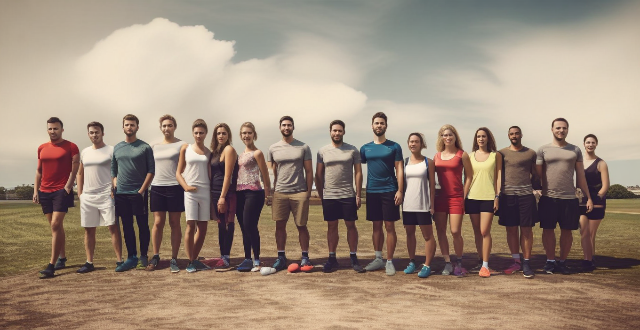
In what ways do sports teams with diverse backgrounds promote unity and understanding ?
Diversity within sports teams promotes unity and understanding through cultural exchange, pursuit of common goals, enhanced communication skills, promotion of inclusivity, building community ties, education about differences, and celebrating achievements. These aspects contribute to a broader societal impact, encouraging harmony and mutual respect beyond the realm of sports.

What impact does the representation of diverse cultures have on sports marketing and branding ?
The representation of diverse cultures in sports marketing and branding can increase market reach, enhance credibility, improve customer loyalty, and foster innovation. Companies should prioritize diversity to expand their reach, build trust, and inspire creativity.
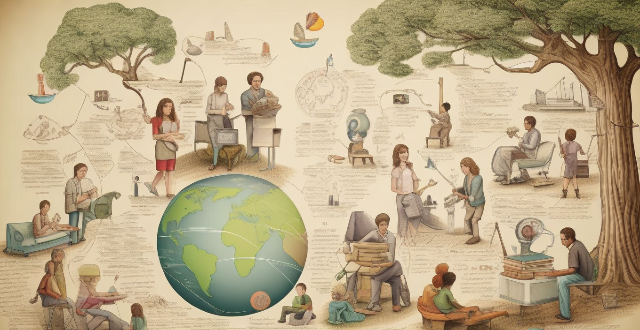
How can teachers effectively incorporate multicultural education into their curriculum ?
Incorporating multicultural education into the curriculum is crucial for fostering understanding and respect for diverse cultures. Teachers can achieve this by integrating culturally diverse literature, teaching through a global lens, promoting cultural sensitivity, encouraging critical thinking, and creating a welcoming learning environment that accommodates all learners. By doing so, they prepare students for a diverse and interconnected world.

How can businesses adapt to a multicultural society to better serve their customers ?
Businesses must adapt to a multicultural society by understanding diverse customer needs, offering cultural competency training, using diverse representation in marketing, tailoring products for different cultures, ensuring accessibility and inclusivity, engaging with communities, and continuously improving based on feedback.

What factors should be considered when evaluating the impact of climate policies on different communities ?
When evaluating the impact of climate policies on different communities, several factors need to be considered. These include economic factors such as income levels and employment opportunities, social factors like population density and education levels, environmental factors including geographical location and biodiversity, political factors such as policy support and legal frameworks, and health factors such as public health infrastructure and mental health. Taking these factors into account ensures that the unique circumstances and needs of different communities are addressed, leading to more effective and equitable outcomes.

What are some best practices for teaching multicultural education ?
Teaching multicultural education is essential for promoting understanding, respect, and appreciation for diverse cultures. Best practices include incorporating diverse perspectives into the curriculum, promoting empathy and respect, using inclusive language, celebrating cultural diversity, fostering collaboration and dialogue, addressing bias and stereotyping, integrating technology and social media, and continuous professional development. By implementing these practices, teachers can create an inclusive and harmonious classroom environment that values and appreciates cultural differences.

What are the best ways to explore the diverse cuisine of South America ?
South America is a continent rich in cultural diversity, and this diversity is reflected in its cuisine. Here are some of the best ways to explore the diverse cuisine of South America: 1. Visit local markets and street food stalls for authentic dishes. 2. Take cooking classes to learn how to make traditional dishes. 3. Dine at local restaurants for regional specialties. 4. Attend food festivals for a variety of South American dishes. 5. Travel off the beaten path for unique culinary traditions. 6. Try different cuisines within South America for a well-rounded understanding of the continent's culinary diversity.

How can we make climate science more accessible and understandable to people from diverse backgrounds ?
Climate science is crucial but complex. To make it accessible, use simple language and visuals, incorporate cultural perspectives, provide interactive learning, and encourage public participation.

How can I diversify my portfolio with different financial products ?
Diversifying your portfolio with different financial products is crucial for managing risk. Here's a summary of the key strategies: 1. **Stocks**: Invest in different industries, company sizes, and both growth and value stocks. 2. **Bonds**: Purchase bonds with varying maturities, including corporate, government, and municipal bonds. Consider bond funds or ETFs for broader exposure. 3. **Mutual Funds and ETFs**: Invest in funds focusing on different asset classes, geographical regions, or sectors like technology or healthcare. 4. **Real Estate**: Include options like direct ownership, REITs, or real estate syndications for potential rental income and as a hedge against inflation. 5. **Commodities and Precious Metals**: Add physical commodities, futures, options, or commodity-focused ETFs to serve as a store of value during inflationary periods. 6. **Alternative Investments**: Allocate a portion of your portfolio to assets like private equity, hedge funds, or collectibles for unique opportunities outside traditional markets. 7. **International Exposure**: Expand beyond domestic markets through foreign stock markets, international mutual funds or ETFs, and emerging market investments. Diversification requires a thoughtful approach to balancing risk and reward across various asset classes and markets, considering investment goals, risk tolerance, and time horizon.

How does scientific literacy among women vary across different countries and cultures ?
This article explores the variations in scientific literacy among women across different countries and cultures. It highlights the factors that influence scientific literacy, including education, socio-economic status, cultural norms, and access to resources. The article also discusses the implications of these variations for society as a whole, such as health outcomes, economic development, and environmental sustainability efforts. Finally, it emphasizes the importance of promoting scientific literacy among women through targeted education programs and initiatives that address the specific challenges faced by women in different cultural contexts.

How can we ensure that climate education and awareness efforts are accessible and relevant to diverse communities ?
The text discusses strategies for making climate education more inclusive and effective, including using language appropriately, considering cultural differences, addressing socioeconomic status, and involving youth. It emphasizes the importance of tailoring messages and materials to be culturally sensitive and relevant to each community, providing free or low-cost resources, and partnering with local organizations to reach diverse communities directly. The text concludes that by taking these factors into account, we can create more inclusive and effective climate education programs that inspire action across all sectors of society.

Can you suggest a shopping app that offers price comparison across different retailers ?
Honey is a shopping app that offers price comparison across different retailers. It has a browser extension and a mobile app, making it easy to use on both desktop and mobile devices. Honey's key features include price tracking, Droplist, coupon finder, Amazon Best Sellers, price history, and support for over 30,000 retailers. Using Honey, you can easily compare prices across different retailers and make informed purchasing decisions. The app is free to use and can be downloaded from the Google Play Store or Apple App Store.

What role does art play in cultural exchange ?
Art is a powerful medium for cultural exchange, promoting understanding and empathy between different societies. It transcends language barriers and connects people on a deeper level. Art can facilitate mutual understanding by exposing individuals to diverse perspectives and experiences. Visual arts provide a visual representation of culture, while performing arts offer a dynamic form of cultural exchange. Literary arts explore the inner workings of a culture through its stories and narratives. Art also promotes creativity and innovation within cultures, encouraging experimentation with new ideas. Artistic collaborations between artists from different cultures can result in groundbreaking works that blend traditional elements with modern influences. Art serves as a means of preserving cultural heritage, documenting the history, traditions, and customs of a society. Museums and galleries showcase art from different cultures, promoting cultural awareness and appreciation among the public. Cultural festivals celebrate the artistic achievements of different cultures through various forms of performance. Overall, art plays a vital role in cultural exchange by enhancing mutual understanding, promoting creativity and innovation, and preserving cultural heritage.

Can you provide examples of cultural fusion in different parts of the world ?
Cultural fusion, also known as cultural integration or hybridity, is a phenomenon that occurs when two or more distinct cultures interact and blend to create a new, unique culture. This process can be observed in various parts of the world, where different cultures have come together to form new traditions, languages, cuisines, art forms, and lifestyles. Some examples of cultural fusion include Korea-Japan cultural exchange, India-Pakistan cultural influence, Spain-Morocco cross-cultural interaction, France-England historical interactions, Mexico-United States border culture, and Caribbean-African diasporic cultures. These examples illustrate how cultural fusion can lead to the creation of new and exciting forms of expression across different aspects of society.
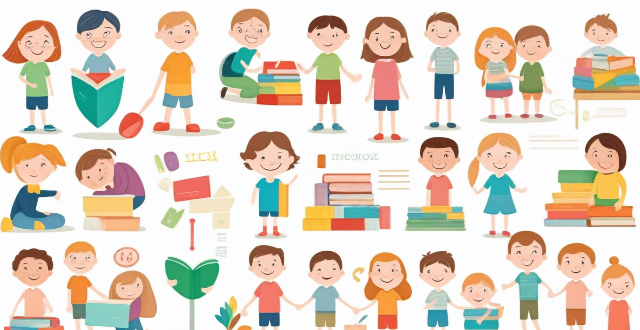
How do you create an inclusive classroom environment for students with diverse special education needs ?
Creating an inclusive classroom for students with diverse special education needs is essential. Strategies include differentiated instruction, Universal Design for Learning (UDL), collaborative learning, positive classroom culture, and professional development. These approaches ensure equal opportunities for all students to learn and thrive.

How does cultural exchange promote understanding between different societies ?
Cultural exchange promotes understanding between societies by increasing awareness of diversity, enhancing mutual respect, facilitating dialogue and communication, and promoting collaboration and cooperation.

How can we encourage more people from diverse backgrounds to get involved in sports at all levels, from grassroots to professional ?
This discussion outlines a comprehensive approach to encouraging diversity in sports, including community outreach programs, infrastructure development, policy advocacy, corporate social responsibility, educational institution involvement, grassroots mobilization, and professional sports inclusion. Strategies include awareness campaigns, youth sports programs, accessible facilities, anti-discrimination laws, sponsorship and funding, employee engagement, school sports programs, university scholarships, community champions, cultural events, diversity in management, talent development pathways, data collection, and adaptive strategies. By implementing these strategies across multiple sectors, we can create a robust ecosystem that supports people from diverse backgrounds to participate in sports at all levels, fostering a more inclusive society through the unifying power of sports.

What are the most popular street foods in different countries ?
Street food is a significant aspect of many cultures worldwide, offering diverse flavors and culinary experiences. Here are some of the most popular street foods from different countries: 1. United States: Hot Dogs, Pretzels, Nachos 2. Mexico: Tacos, Elote, Churros 3. Japan: Takoyaki, Okonomiyaki, Yakitori 4. India: Samosas, Pani Puri, Vada Pav 5. Thailand: Pad Thai, Mango Sticky Rice, Som Tam 6. Italy: Pizza al Taglio, Supplì, Gelato 7. China: Jianbing, Baozi, Roujiamo 8. Turkey: Midye Dolma, Simit, Baklava 9. Vietnam: Banh Mi, Bun Cha, Pho 10. Egypt: Falafel, Koshari, Shawarma

What makes the flavor of street tacos in Mexico different from those found elsewhere ?
The flavor of street tacos in Mexico differs from others due to authentic ingredients, traditional cooking methods, regional specialties, vibrant street food culture, and a variety of condiments.

Can global shopping bridge the gap between different cultures ?
Global shopping, or cross-border e-commerce, has become increasingly popular in recent years. It offers consumers the ability to purchase products from other countries without leaving their homes. However, there are both potential benefits and challenges associated with this trend when it comes to bridging cultural gaps. Benefits include increased exposure to foreign cultures through fashion, food, and home decor; promoting mutual understanding through shared interests in technology, sports, and entertainment; and encouraging cultural sensitivity and respect through handicrafts, holiday celebrations, and language learning tools. Challenges and limitations include issues related to shipping costs, customs regulations, language barriers, loss of local cultural identity due to overreliance on foreign products, and the potential for consumerism rather than genuine cultural exchange. Overall, while global shopping offers opportunities for cultural exchange and understanding, it is important to approach this trend with mindfulness and consideration for its potential impact on individual cultures and the broader global community.
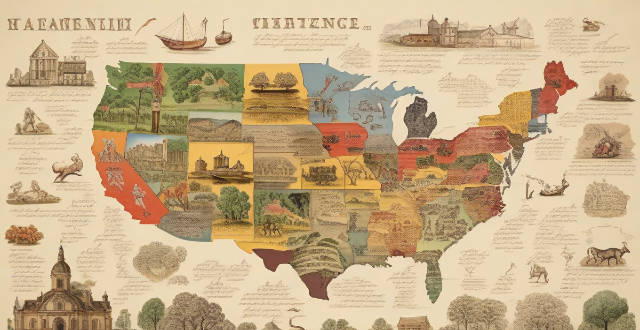
What are the key differences between the cultures of different South American countries ?
Key differences between the cultures of different South American countries include language, music and dance, food, religion, and social structure. Each country has its own unique characteristics shaped by factors such as history, geography, and social structure.

How do different countries approach public transportation infrastructure and policies ?
The topic summary for the text on "Public Transportation Infrastructure and Policies in Different Countries" is as follows: Public transportation infrastructure and policies vary significantly across different countries, influenced by each nation's geography, economy, culture, and governmental priorities. The United States has well-developed urban transit systems but relies heavily on personal vehicles in suburban and rural areas. China boasts a high-speed rail network and rapidly expanding urban metro systems, with clear prioritization of public transport over private vehicles. Germany has a comprehensive regional train network and emphasizes sustainability in its transit planning. Japan is known for its efficient urban rail systems deeply integrated into society and culture. Brazil focuses on social inclusion through accessible and affordable public transport, including pioneering Bus Rapid Transit (BRT) systems. These diverse approaches highlight how public transportation strategies can significantly impact urban congestion, air quality, and citizens' quality of life.

How do different regions of the world experience the impacts of climate change on agriculture differently ?
Climate change affects agriculture differently across the globe, depending on local climate conditions, soil types, water availability, and agricultural practices. In tropical regions, high temperatures and humidity, along with frequent extreme weather events and pest and disease pressure, negatively impact crop yields. Arid and semi-arid regions face water scarcity due to reduced rainfall and increased evaporation rates, leading to limited agricultural productivity. Desertification causes soil degradation and loss of arable land. Temperate regions experience changes in precipitation patterns, affecting crop growth, while warmer winters can extend growing seasons. Extreme weather events can damage crops and reduce yields. Polar regions see extended growing seasons due to warming temperatures, but permafrost melting causes soil instability, and changes in ocean currents affect fishing industries. Mountainous regions face changes in temperature and precipitation that alter snowmelt timing and amount, affecting water availability for irrigation. Glacier retreat reduces water supplies for downstream communities and agriculture, while natural disasters like landslides destroy crops and damage infrastructure.

What are the challenges in setting realistic climate goals for different industries ?
Setting realistic climate goals for different industries is a complex task that requires careful consideration of various factors. This article discusses the challenges involved in this process and provides recommendations for overcoming them, including collaboration, data collection, economic incentives, regulatory harmonization, and transparency.
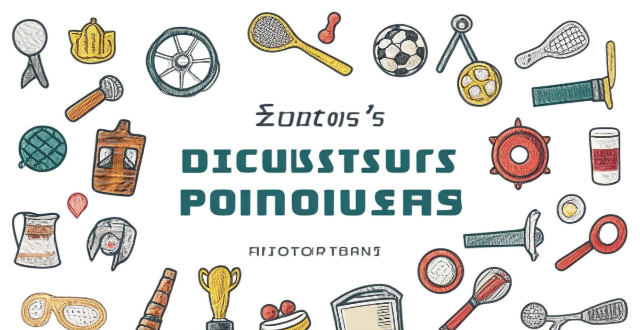
How do different types of sports sponsorship (e.g. title sponsorship, kit sponsorship) affect a company's brand exposure ?
This text discusses various types of sports sponsorship, including title sponsorship, kit sponsorship, venue sponsorship, event sponsorship, and team sponsorship. Each type offers different impacts on brand exposure, such as high visibility, brand association, targeted audience reach, community involvement, and potential for success sharing. Overall, sports sponsorship provides companies with opportunities to align themselves with the excitement and passion of sports, reaching diverse audiences and enhancing their brand image.

What challenges do athletes from different cultural backgrounds face when competing in foreign countries ?
Athletes from different cultural backgrounds face challenges when competing in foreign countries, including language barriers, cultural differences, time zone changes, and homesickness. These issues can affect performance, mental state, and overall experience during competition. Overcoming these challenges requires resilience, adaptability, and a strong support system.

How does the perception of climate-related risks vary across different cultures and societies ?
The perception of climate-related risks varies across different cultures and societies due to factors like historical experiences, cultural values, socioeconomic conditions, education levels, access to information, political landscapes, and religious beliefs. Understanding these variations is crucial for developing effective strategies to address climate change globally.

What makes street food unique in different parts of China ?
Street food in China reflects the country's diverse cultural heritage and regional differences. From hearty meals in the north to seafood delights in the south, each region offers its own unique flavors and dishes. The cuisine of eastern China is influenced by its coastal location and the use of soy sauce, while western China's mountainous terrain and ethnic diversity are reflected in the variety of street foods available. Regardless of where you go in China, you're sure to find something delicious to try!